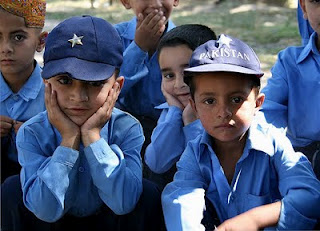A new
survey of Pakistani youth shows why the country is Exhibit A for taking seriously the potent combination of demography and lack of education and employment. Funded by the British Council, the survey shows how
Pakistan’s “youth bulge” can be both threat and opportunity.
If it is coupled with investment in education and employment, the large youthful population can be a dynamic force: the much-heralded “demographic dividend”.
But without effective investment, a “demographic disaster” is more likely. The survey found that 1 in 4 young people are illiterate and only 1 in 5 have full-time jobs. Only 15 percent believe their country is headed in the right direction. Their faith is placed in their religion, not their government.
I might add Pakistan’s poor resource base to the perils of illiteracy, unemployment, and age structure. And let’s not ignore the other big problems of water, economics, and agriculture.
But one thing is certain: the population will continue to grow. The current and projected median projections are 180 million today, 246 million projected in 2025, and 335 million in 2050.
Those making big decisions in U.S. policy toward Pakistan and the region should consider all these underlying factors–and more.
Photo: Brave children of Bakalot, courtesy Flickr user amir taj.
 A Publication of the Stimson Center.
A Publication of the Stimson Center.




